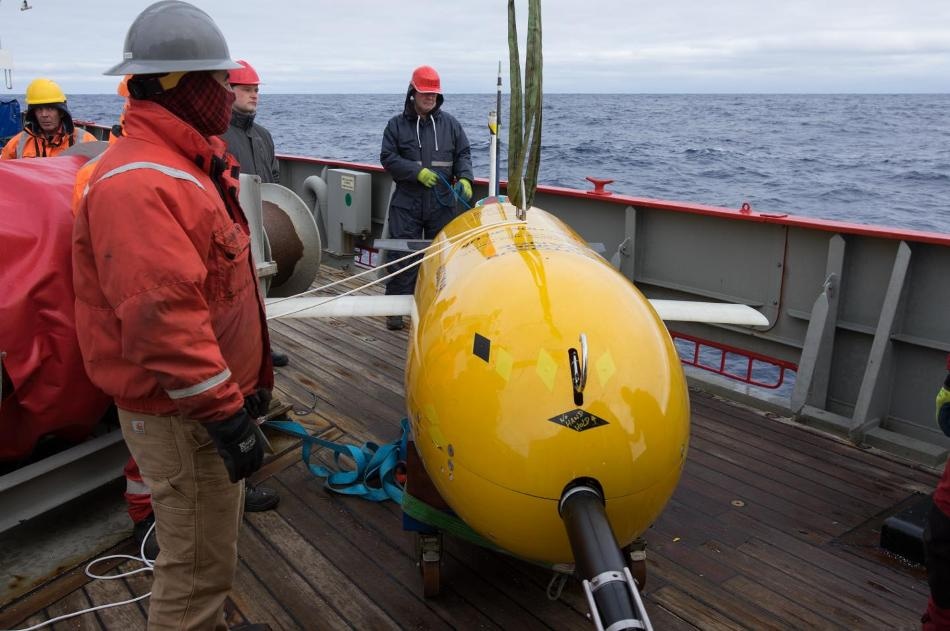Jun 18 2019
For the first time, the first mission of the autonomous submarine vehicle Autosub Long Range (popularly referred to as “Boaty McBoatface”) has cast light on an important process that links increasing Antarctic winds with elevating sea temperatures.
 Boaty McBoatface. (Image credit: Povl Abrahamsen, British Antarctic Survey)
Boaty McBoatface. (Image credit: Povl Abrahamsen, British Antarctic Survey)
Data gathered from the expedition, reported on June 17th 2019 in the scientific journal PNAS, will help climate researchers to make more accurate predictions of the impacts of climate change on increasing sea levels.
The study, which was conducted in April 2017, investigated the varying temperatures at the bottom of the Southern Ocean.
In the course of the three-day mission, Boaty covered 180 km traveling through mountainous underwater valleys to measure the saltiness, turbulence, and temperature of the water at the ocean bed. Boaty used an echo sounder to navigate and succeeded in traveling the risky route, reaching depths of up to 4000 m to join up with the rest of the project team at the programmed rendezvous site at which the submarine was recovered and measurements gathered along its route were downloaded.
In recent years, winds blowing over the Southern Ocean have been getting more powerful because of the hole in the ozone layer above Antarctica and rising levels of greenhouse gases. The data gathered by Boaty, together with other ocean measurements gathered from research vessel RRS James Clark Ross, have unraveled a mechanism that allows these winds to raise turbulence deep in the Southern Ocean, making warm water at mid-depths to combine with cold, dense water in the abyss.
The consequent warming of the water at the seabed is an important contributor to increasing sea levels. Yet, the mechanism revealed by Boaty is not incorporated into existing models for predicting the effect of rising global temperatures on the oceans.
Boaty’s mission was part of a collaborative project, which involved the University of Southampton, the National Oceanography Centre, the British Antarctic Survey, Woods Hole Oceanographic Institution, and Princeton University.
Our study is an important step in understanding how the climate change happening in the remote and inhospitable Antarctic waters will impact the warming of the oceans as a whole and future sea level rise.
Professor Alberto Naveira Garabato, Project Leader, University of Southampton
Dr Eleanor Frajka-Williams of the National Oceanography Centre added, "The data from Boaty McBoatface gave us a completely new way of looking at the deep ocean—the path taken by Boaty created a spatial view of the turbulence near the seafloor."
This study is a great example of how exciting new technology such as the unmanned submarine ‘Boaty McBoatface’ can be used along with ship-based measurements and cutting-edge ocean models to discover and explain previously unknown processes affecting heat transport within the ocean.
Dr Povl Abrahamsen, British Antarctic Survey